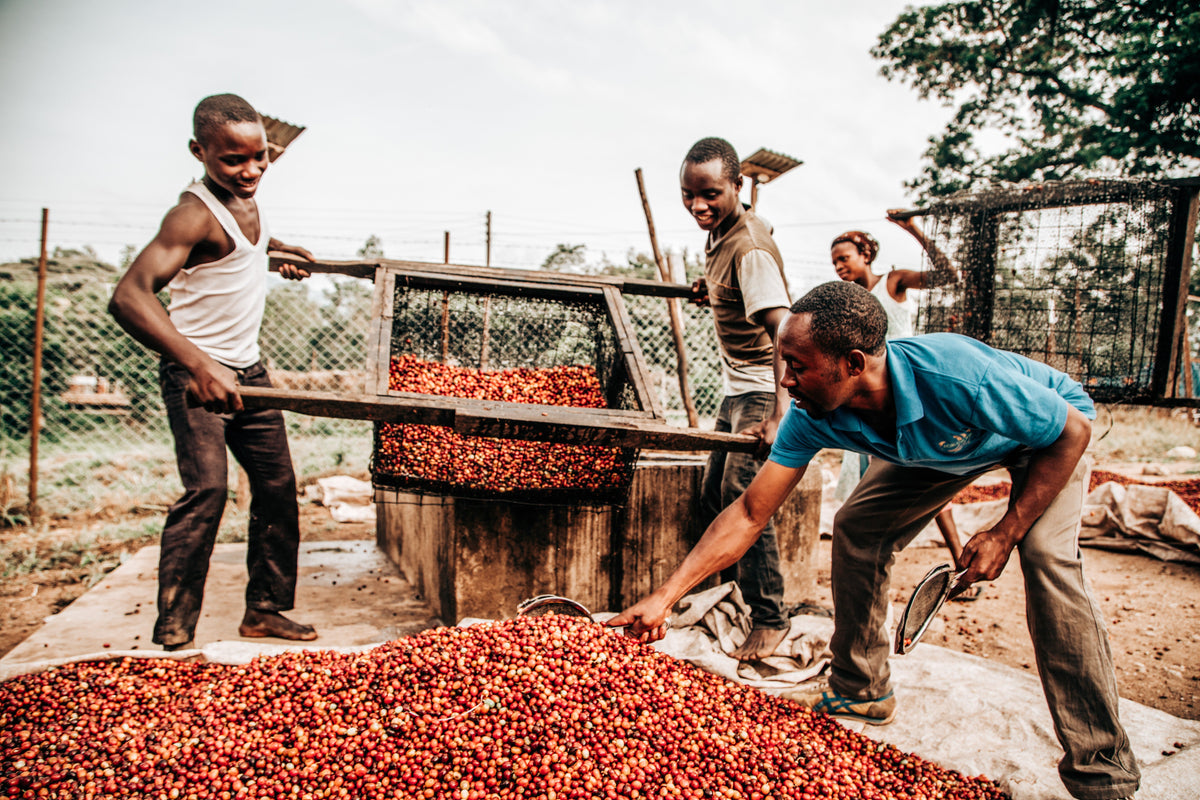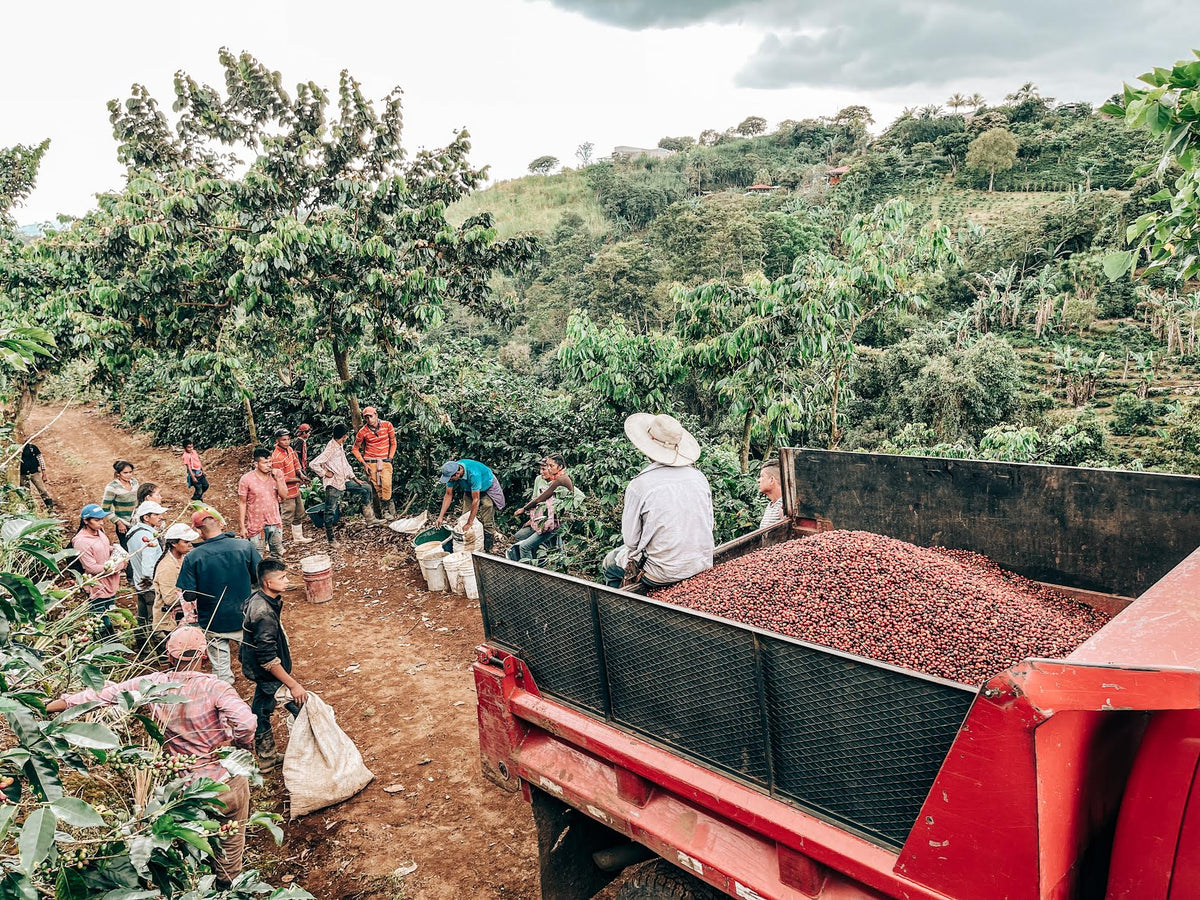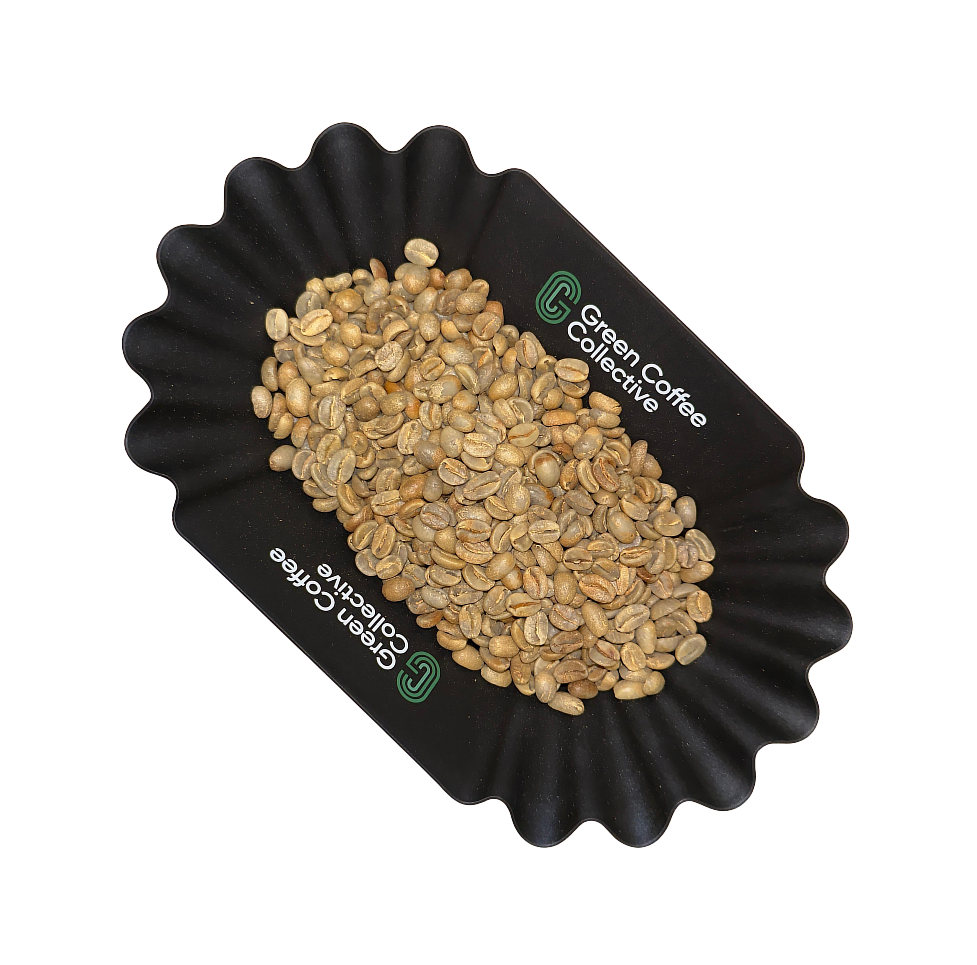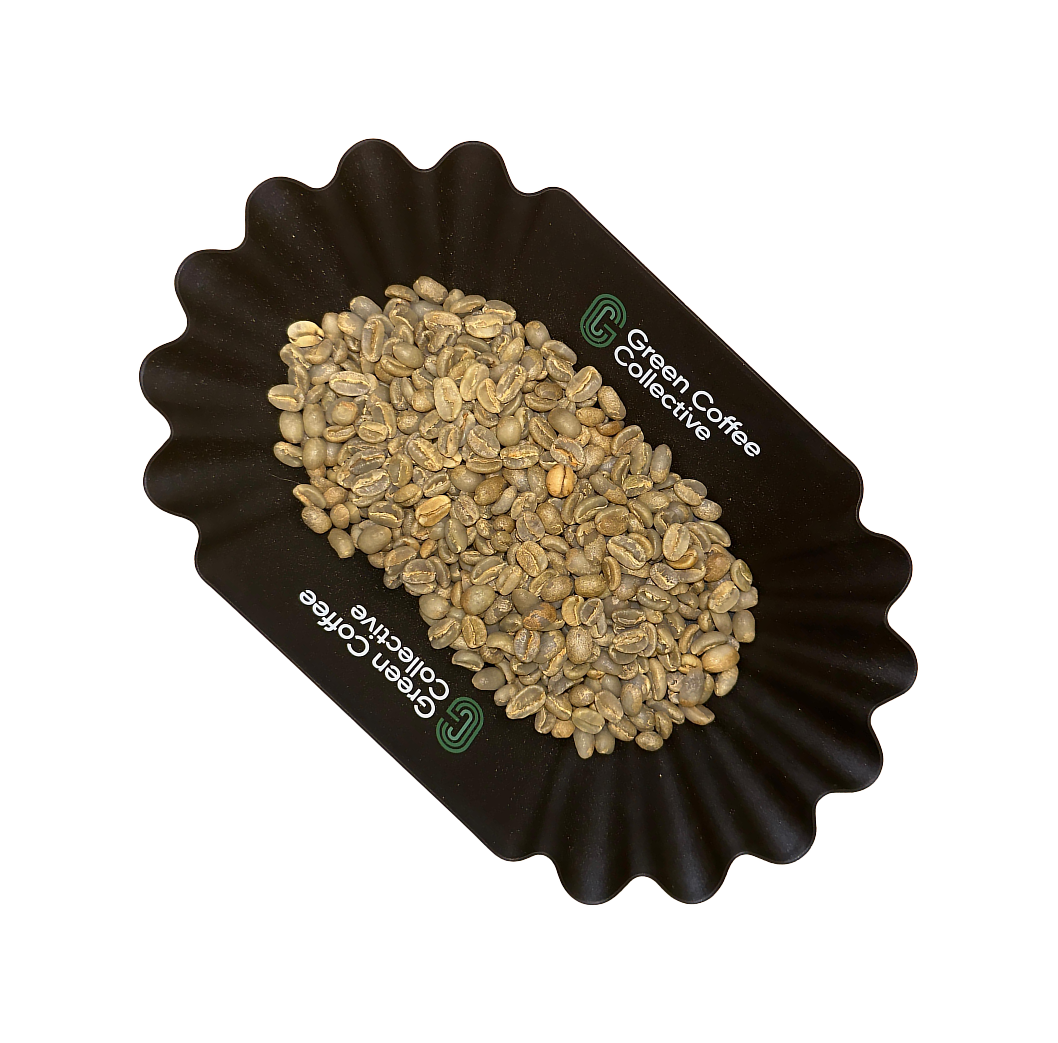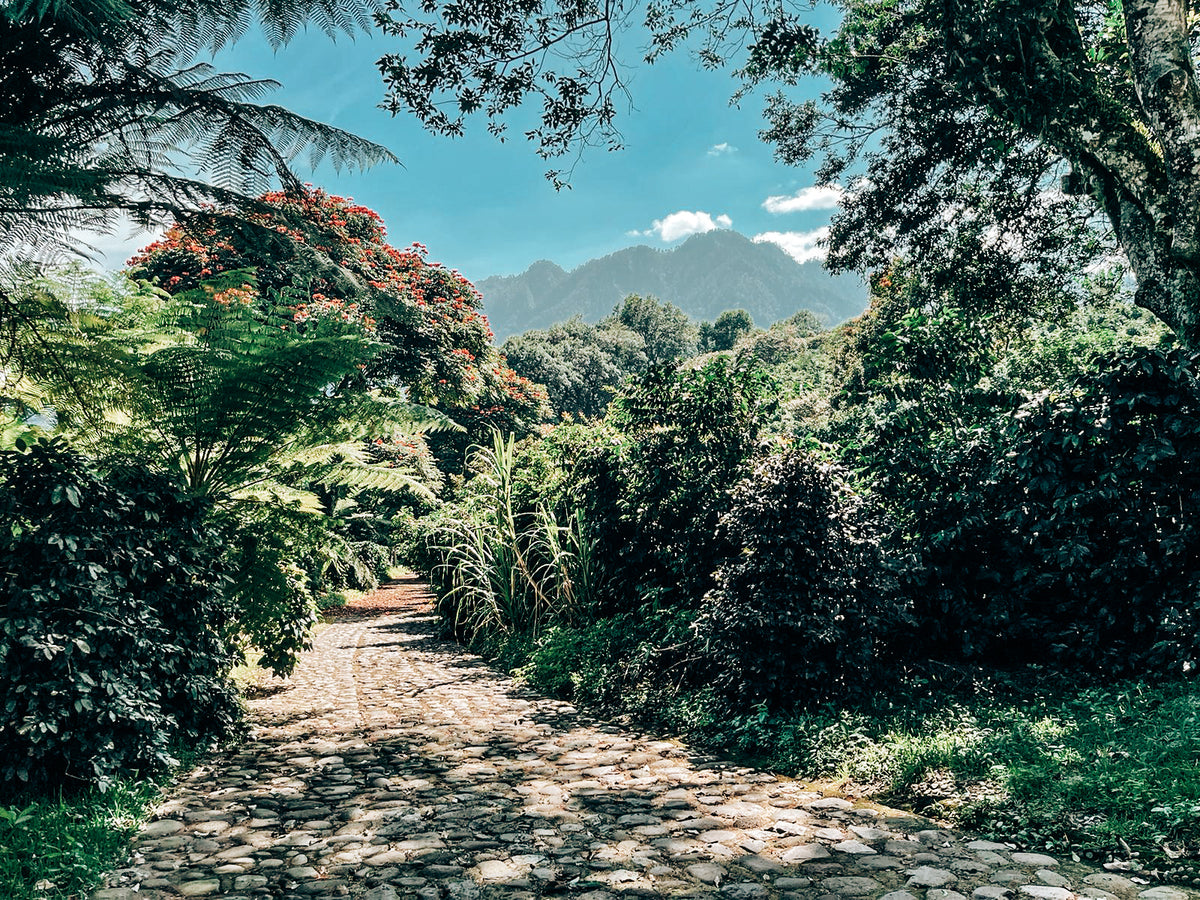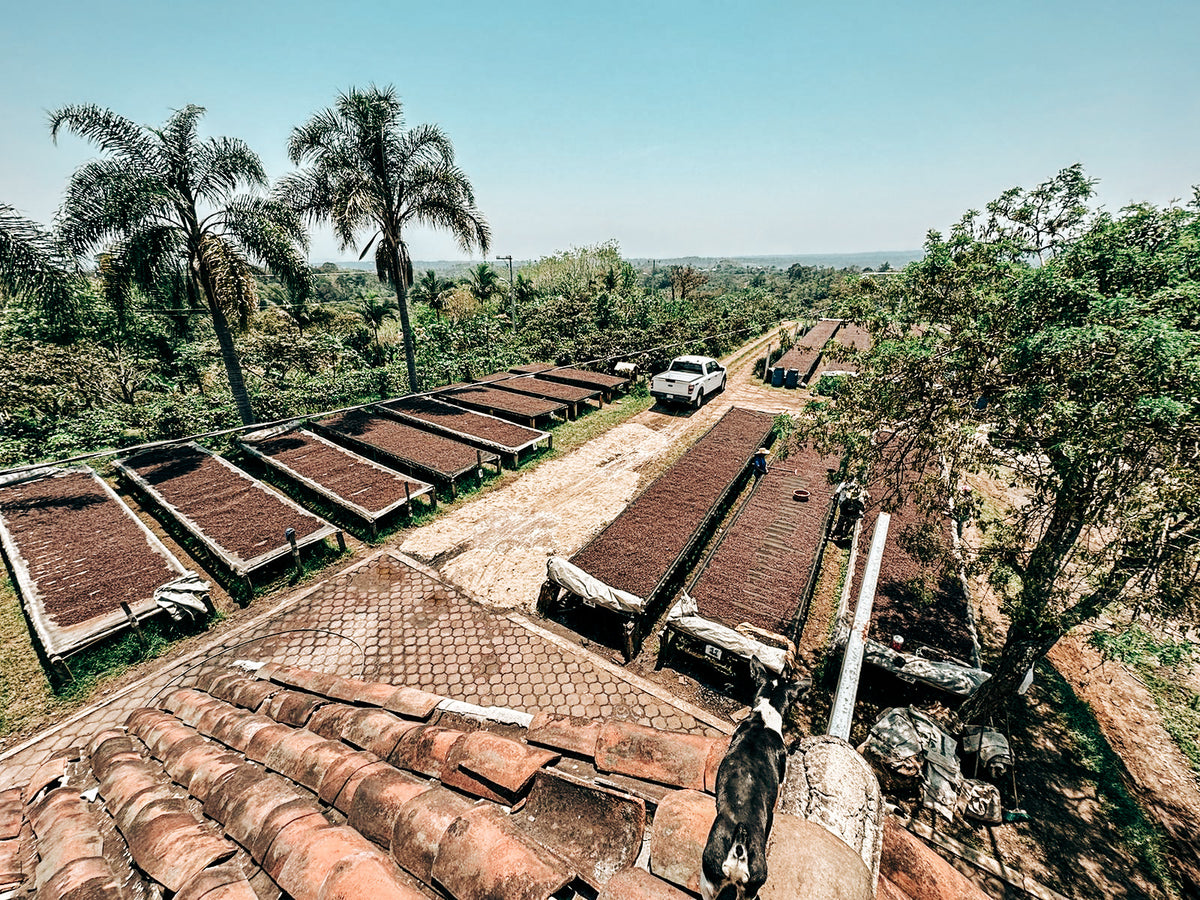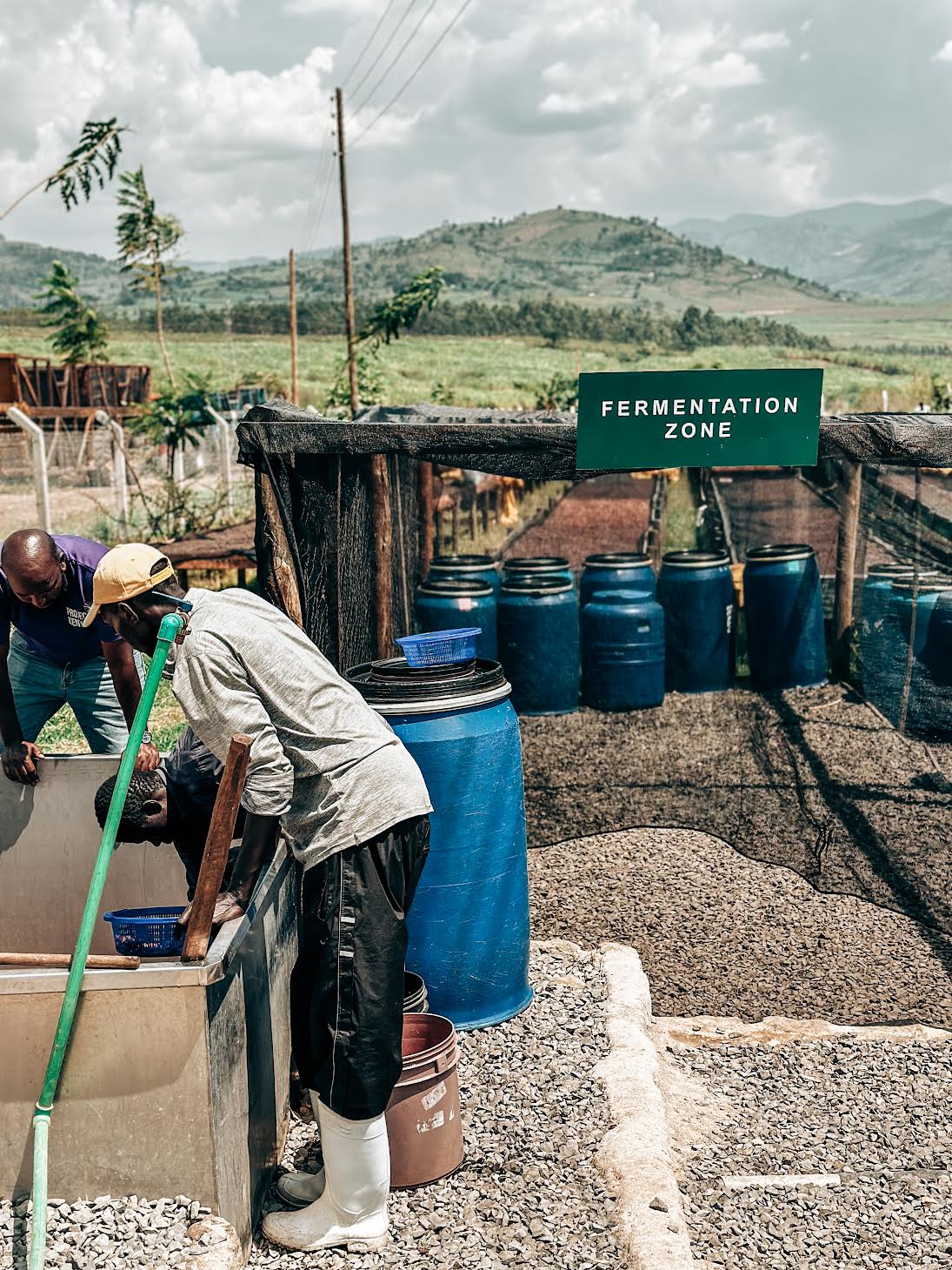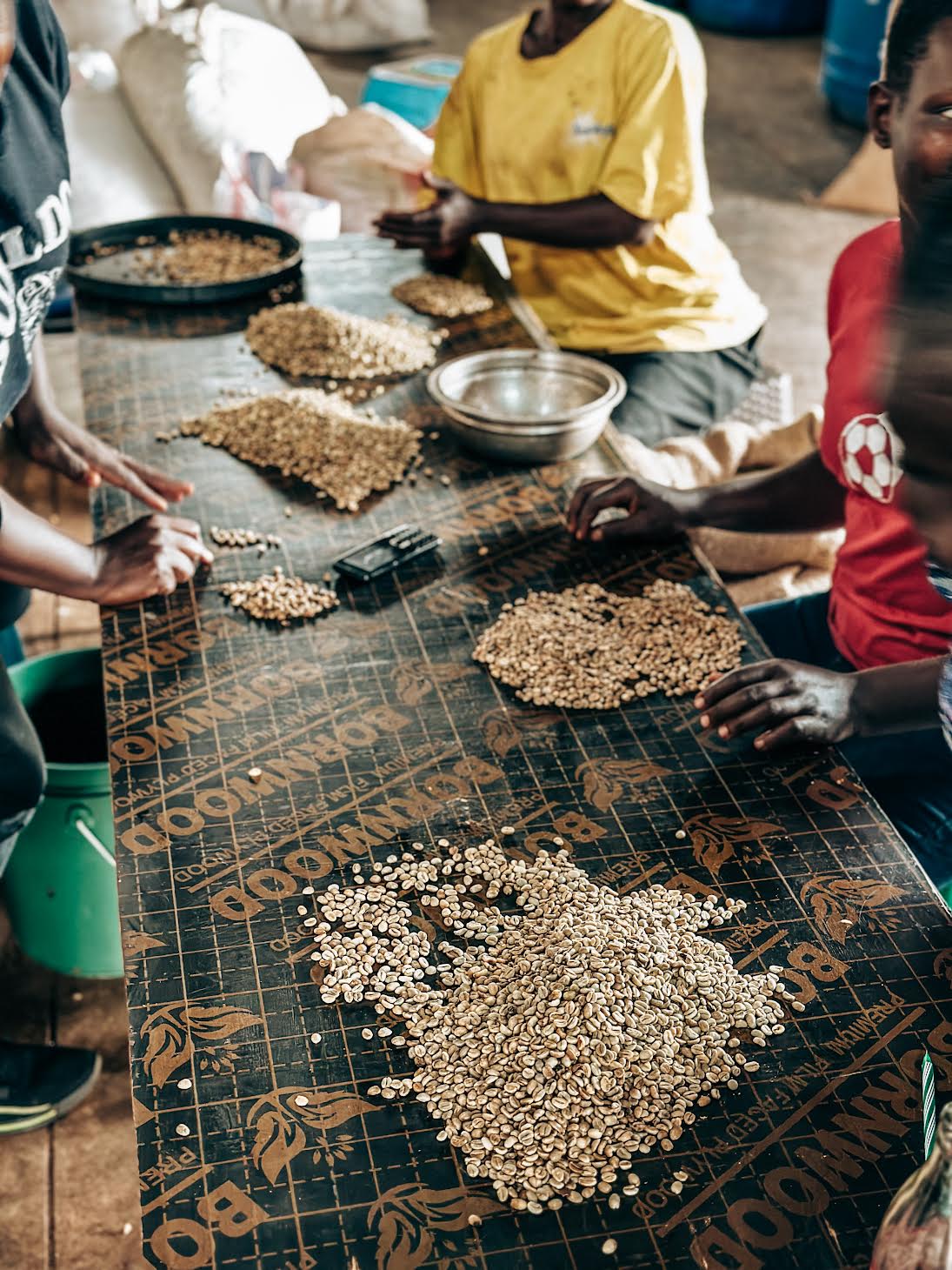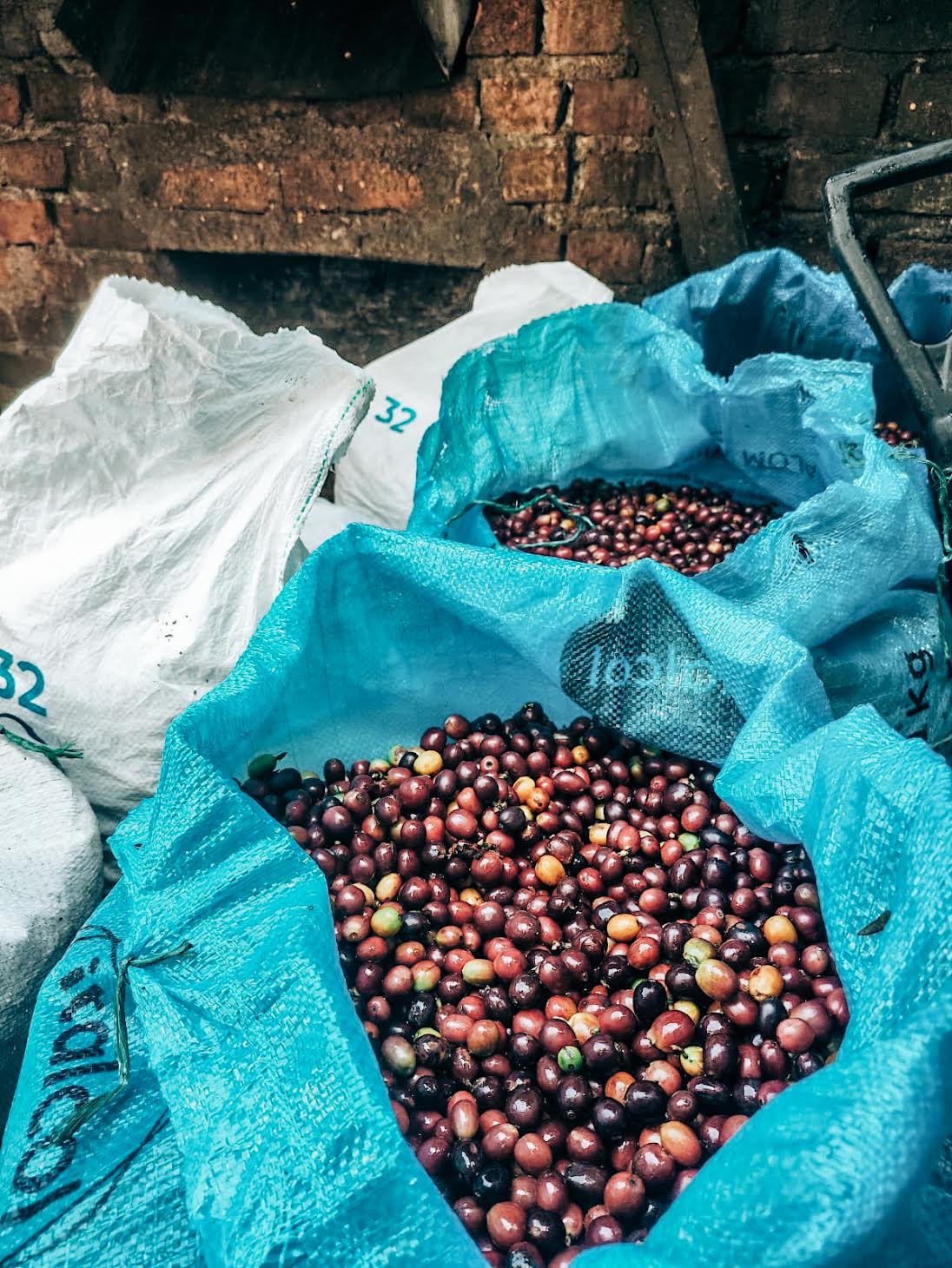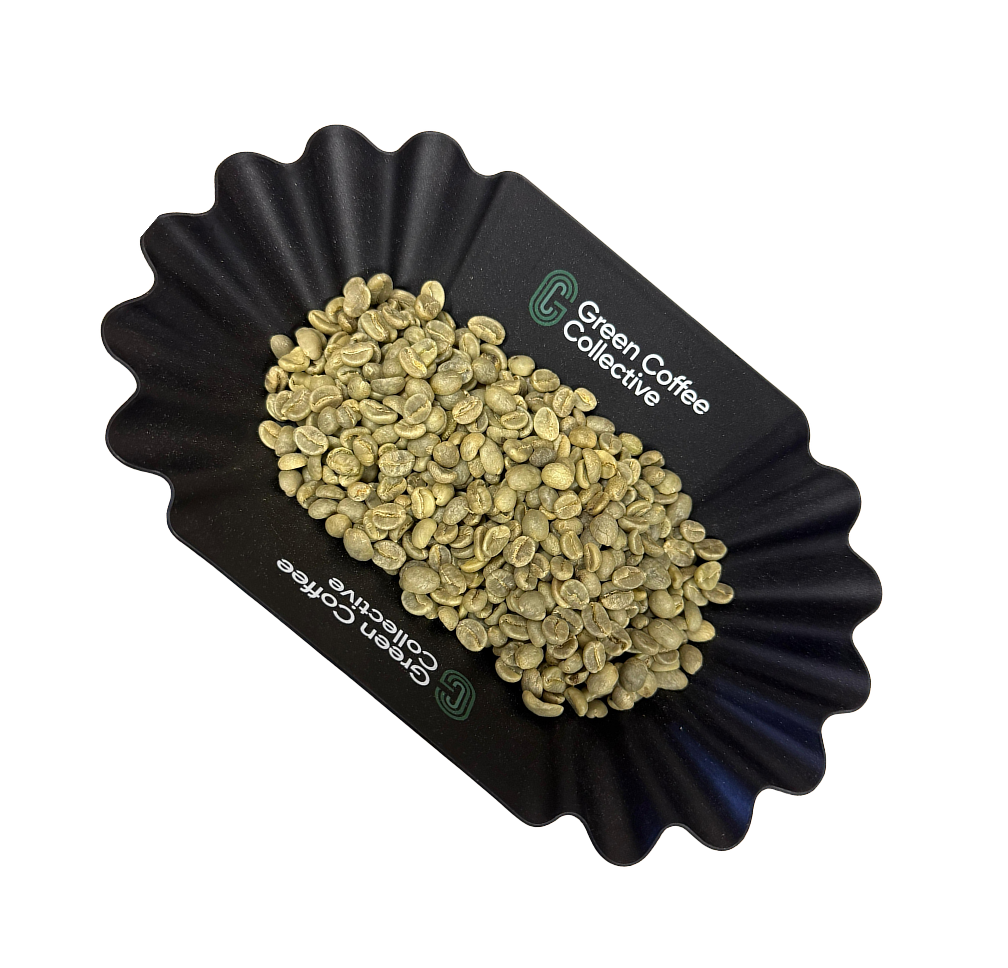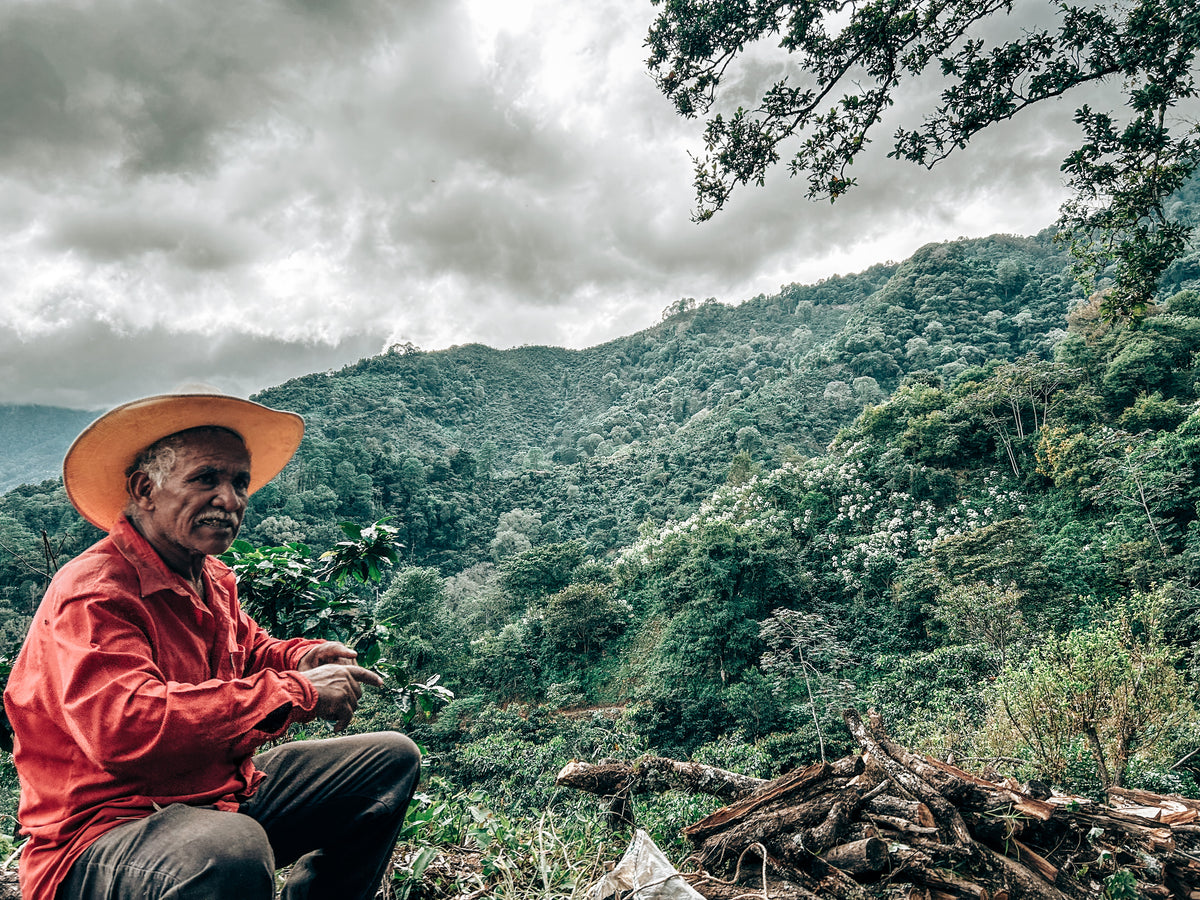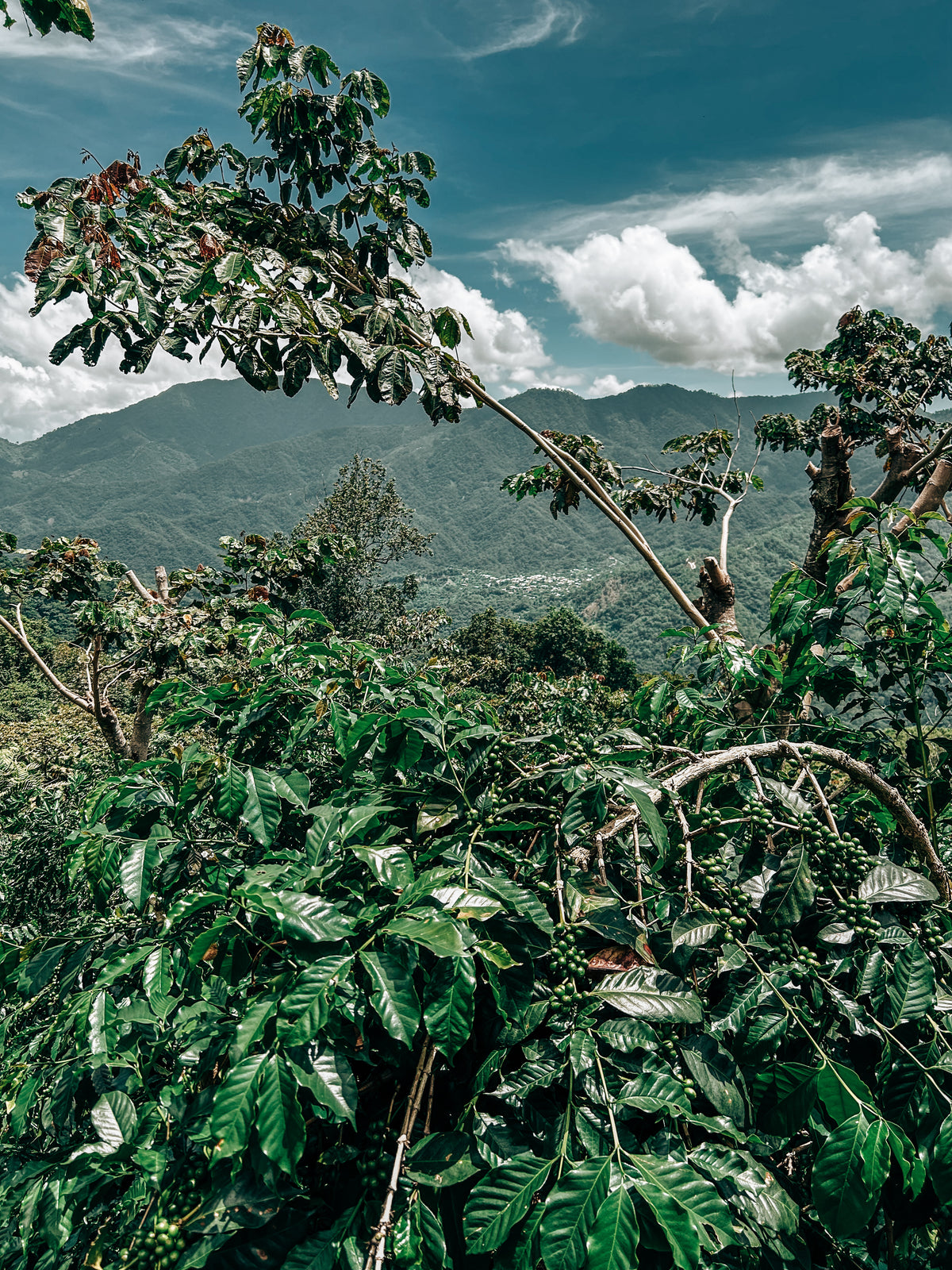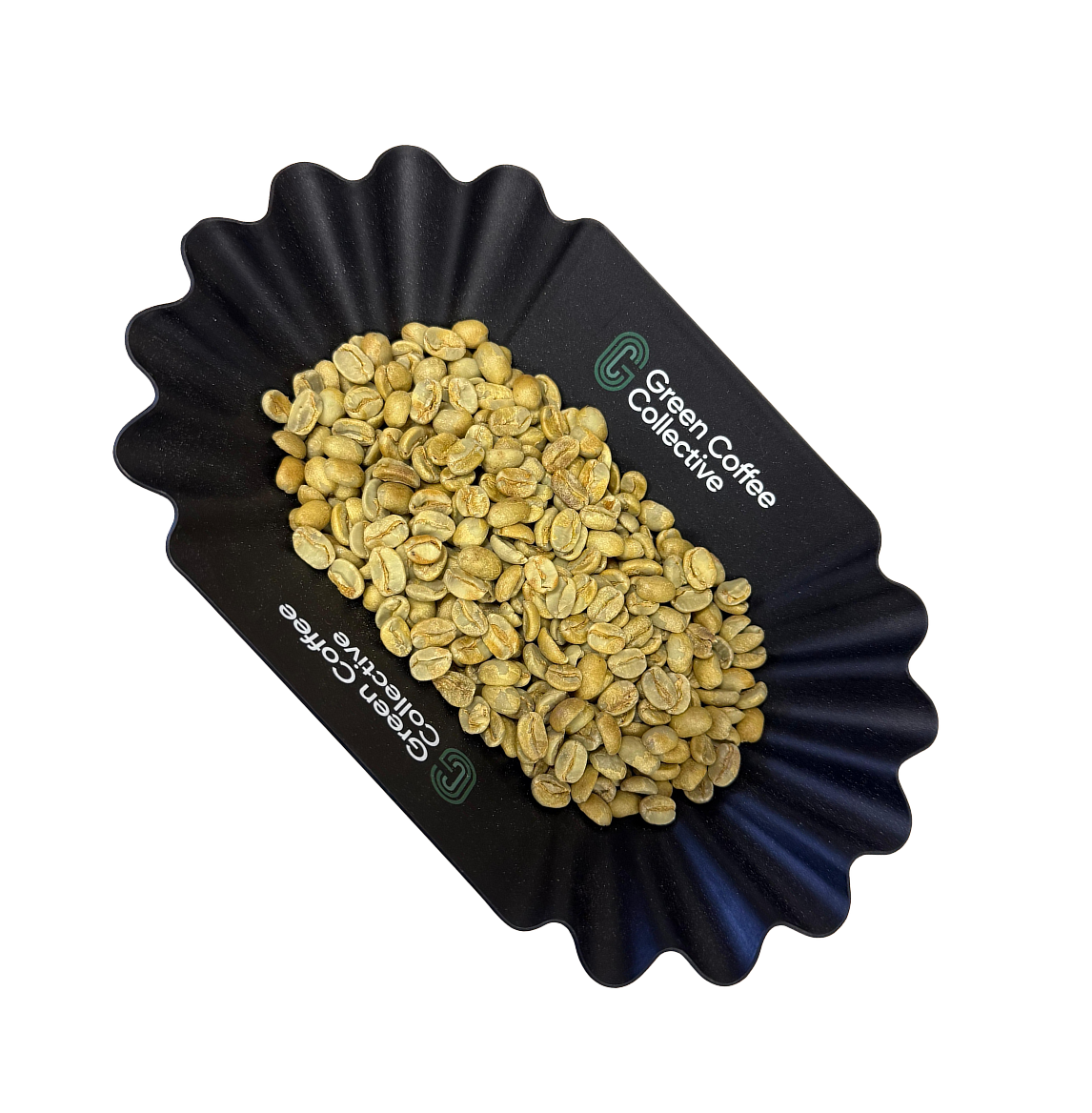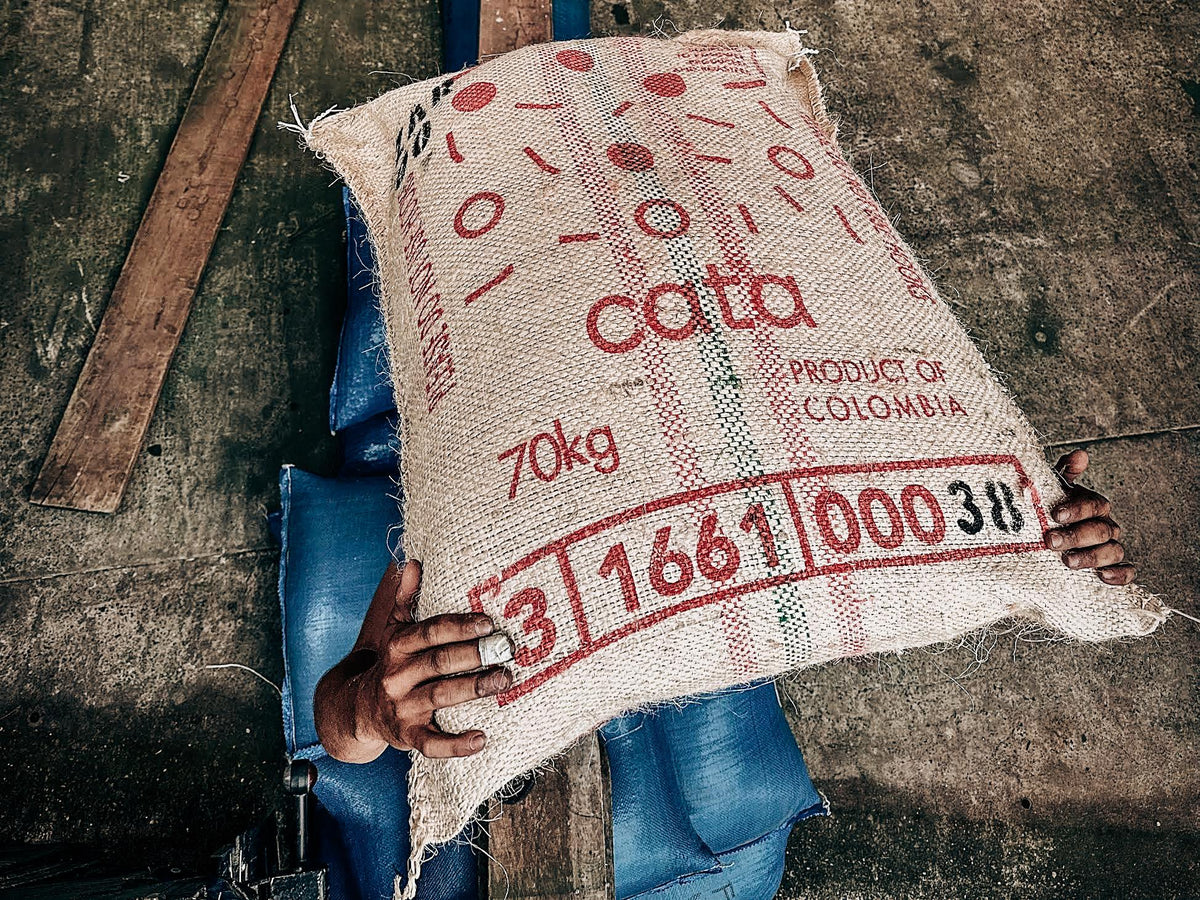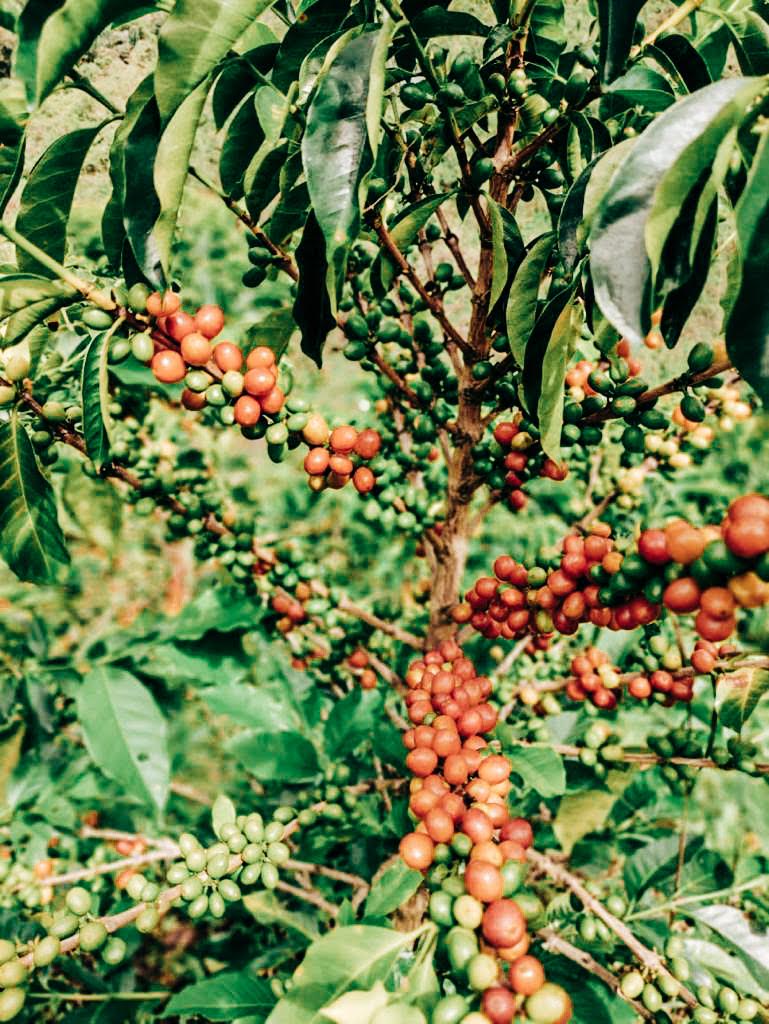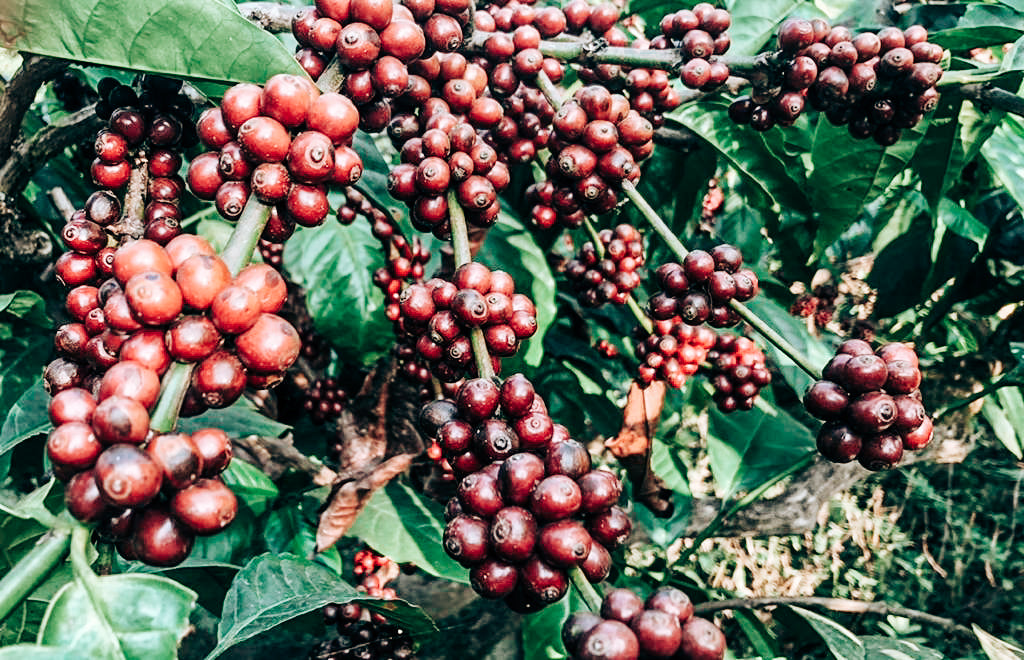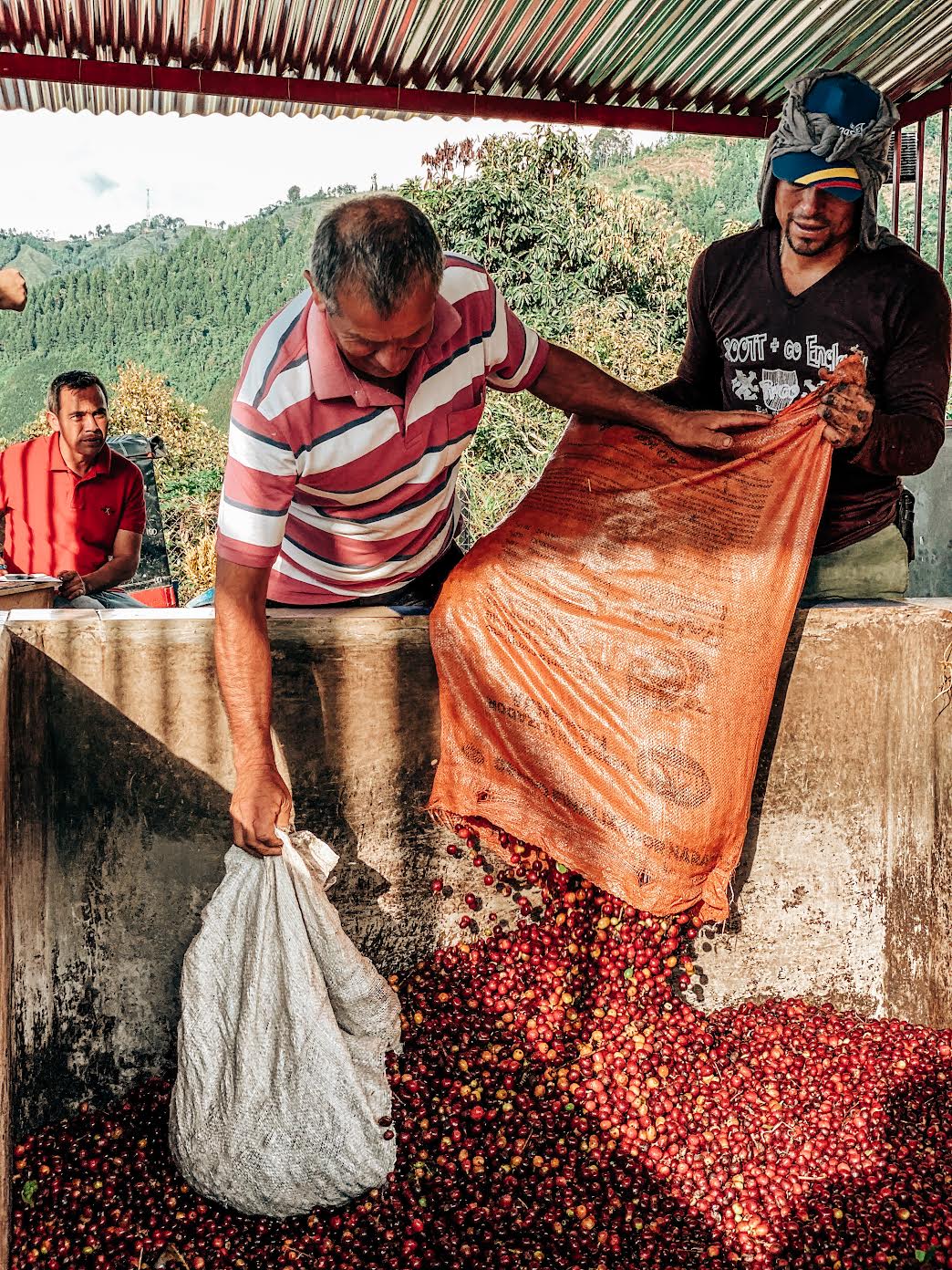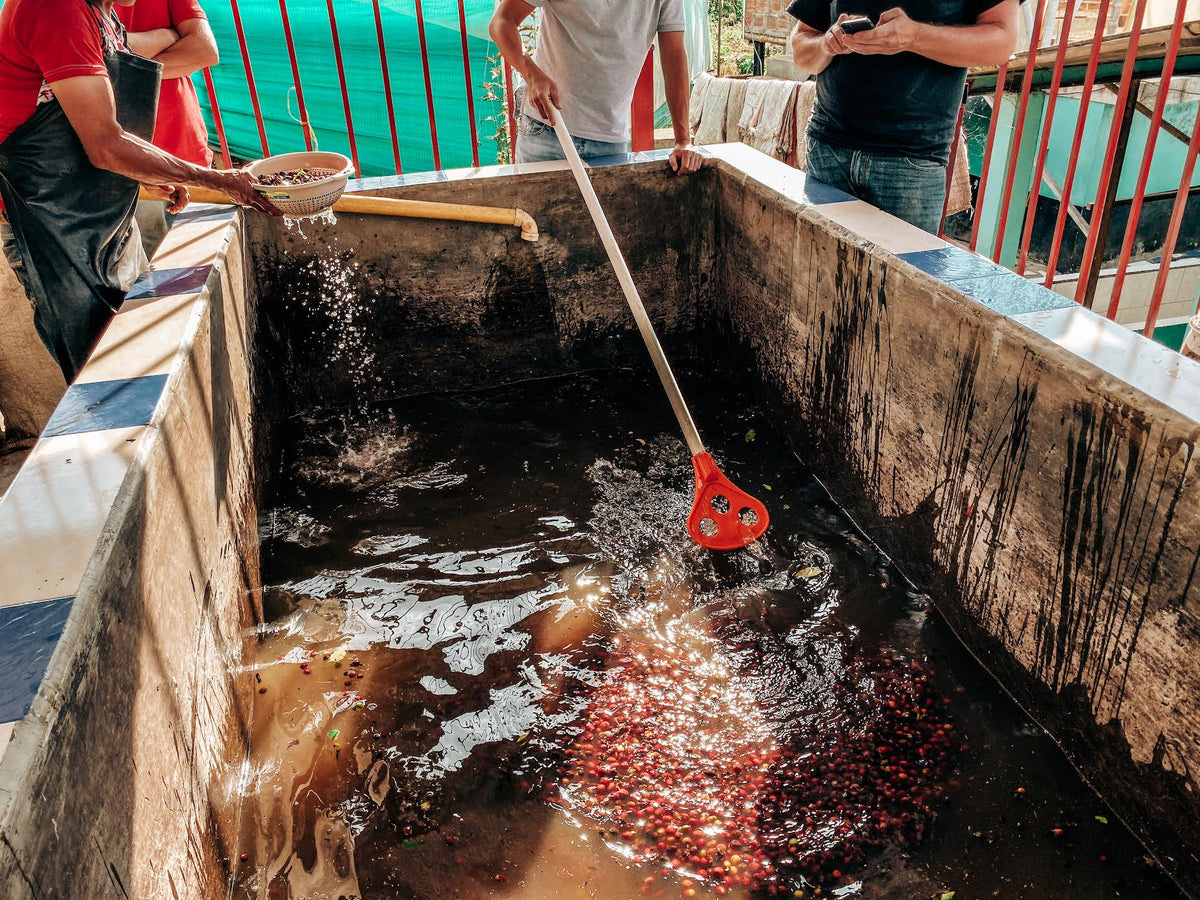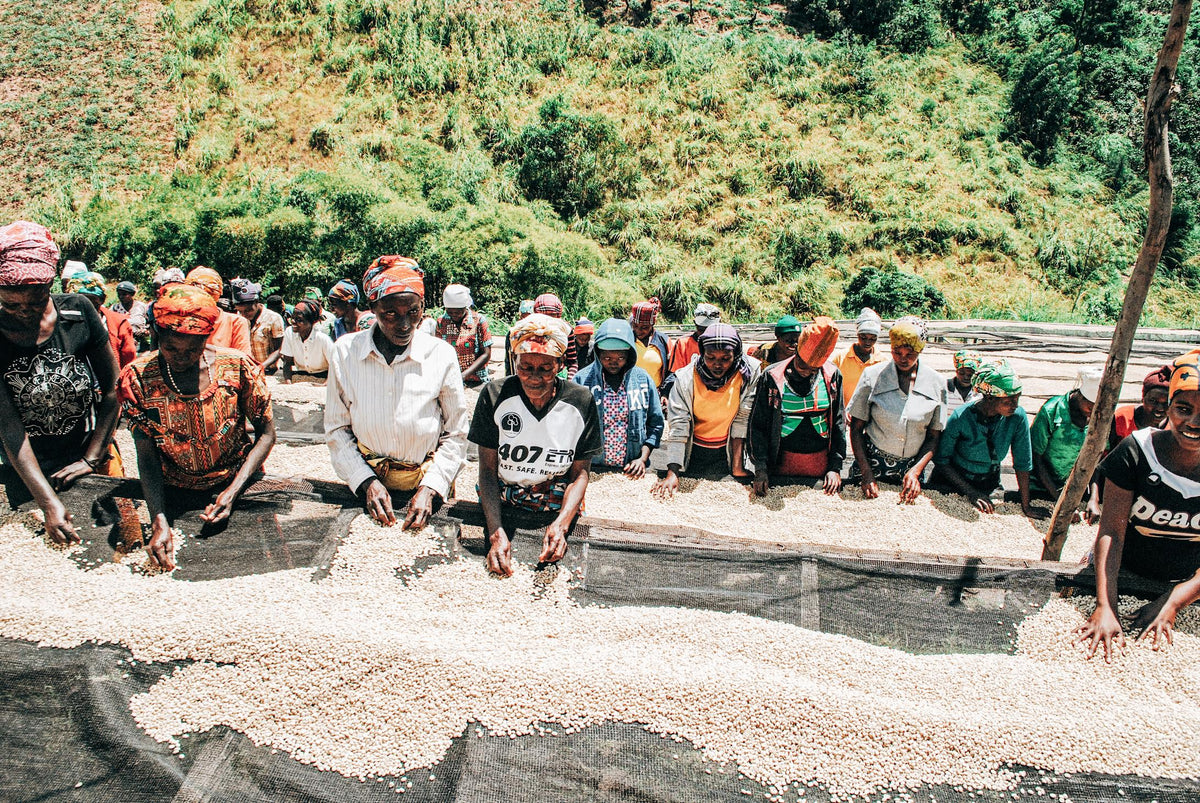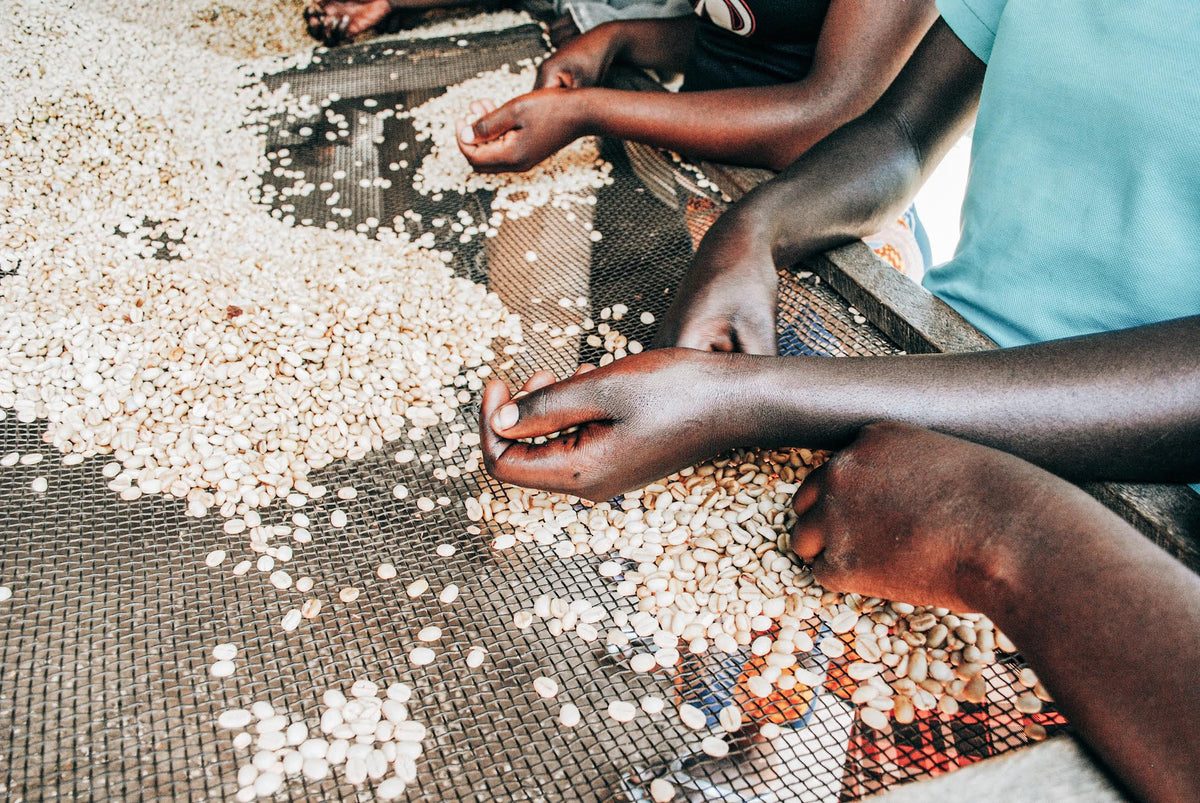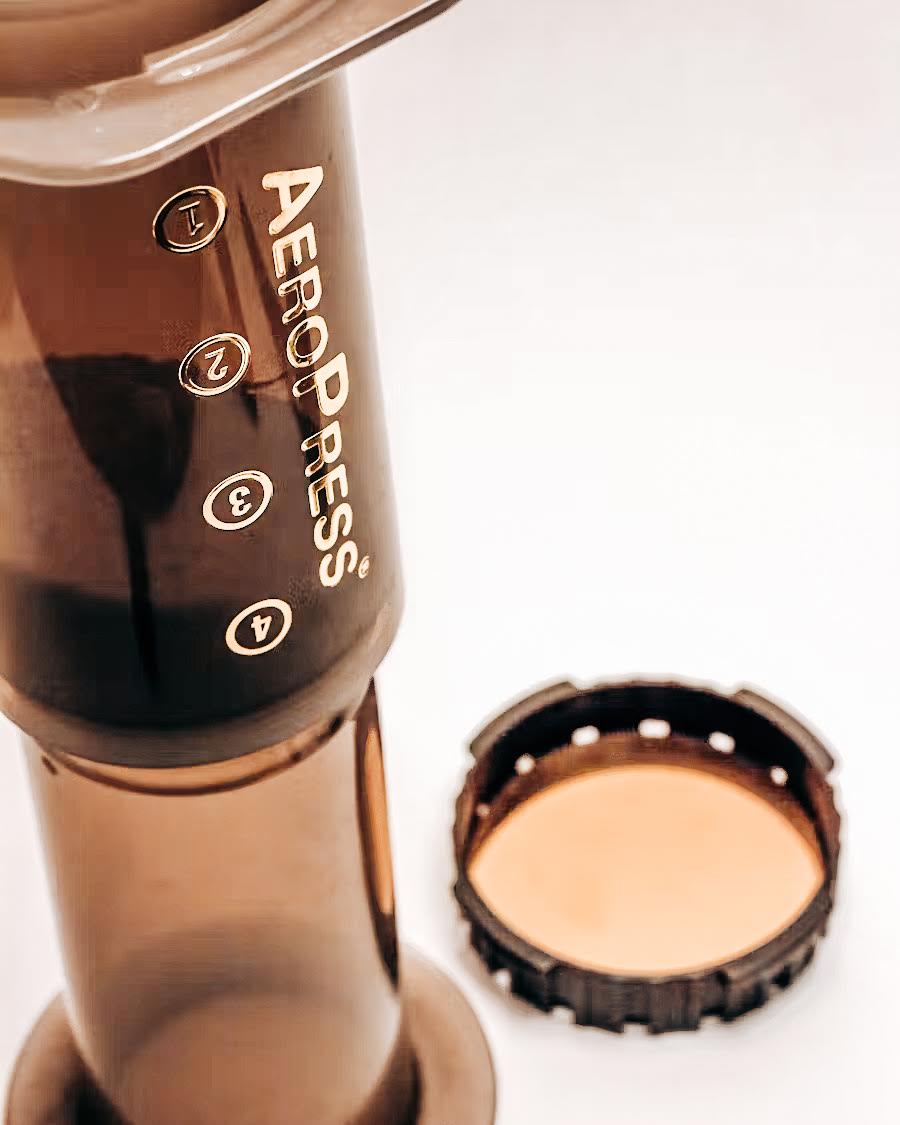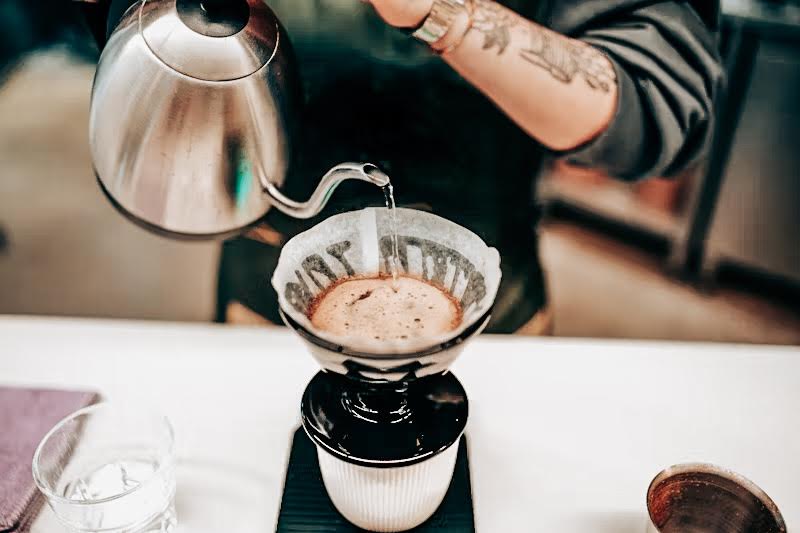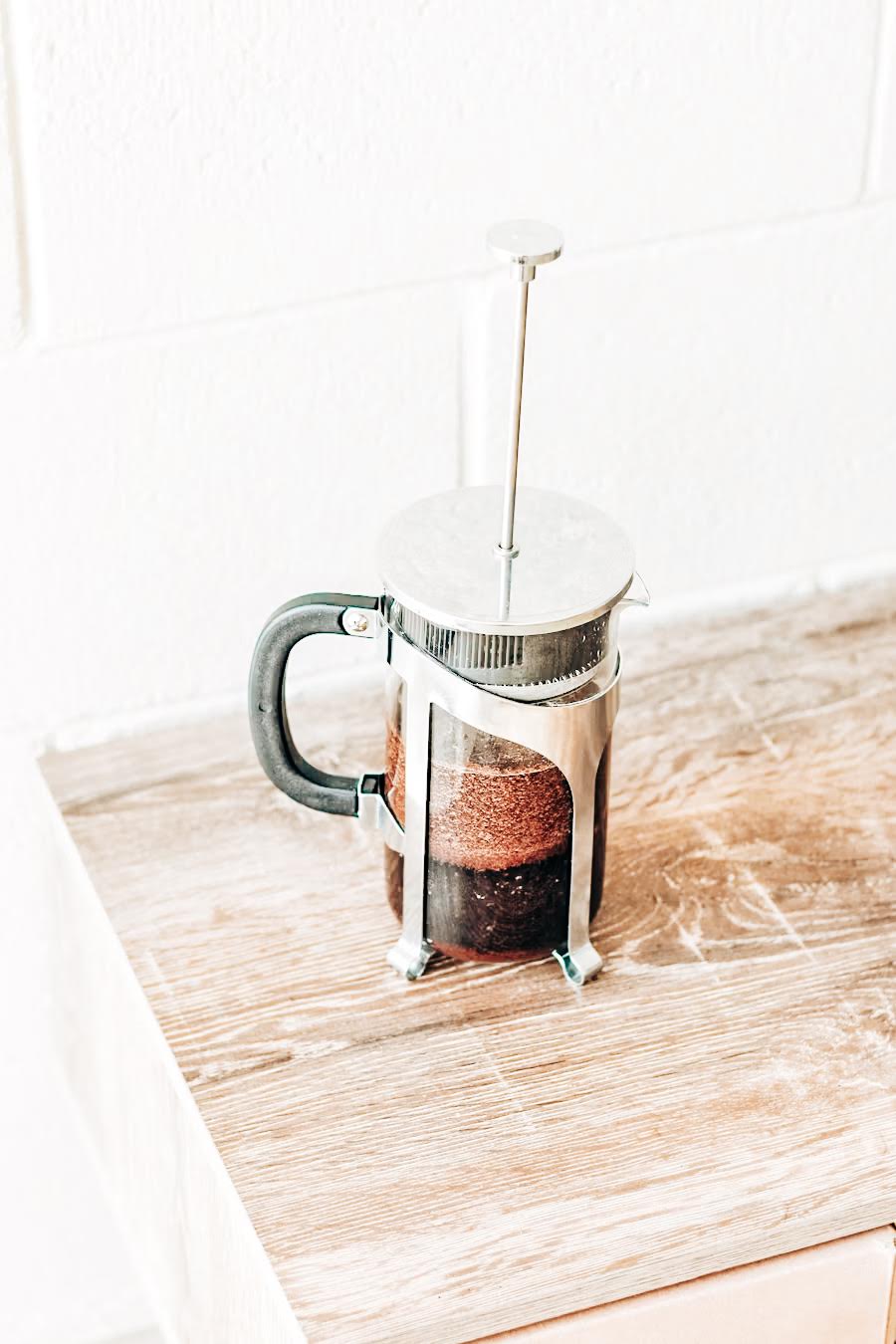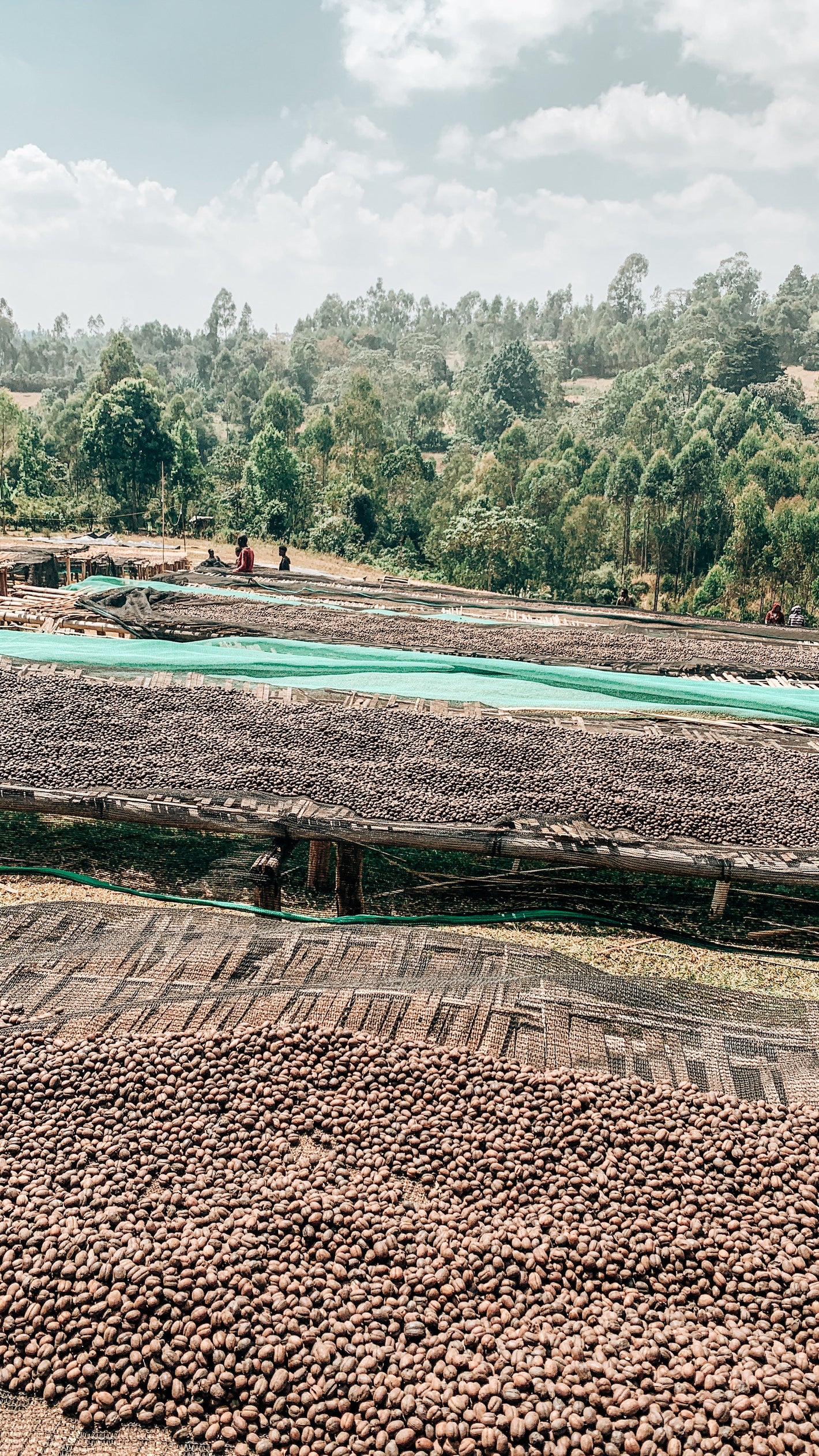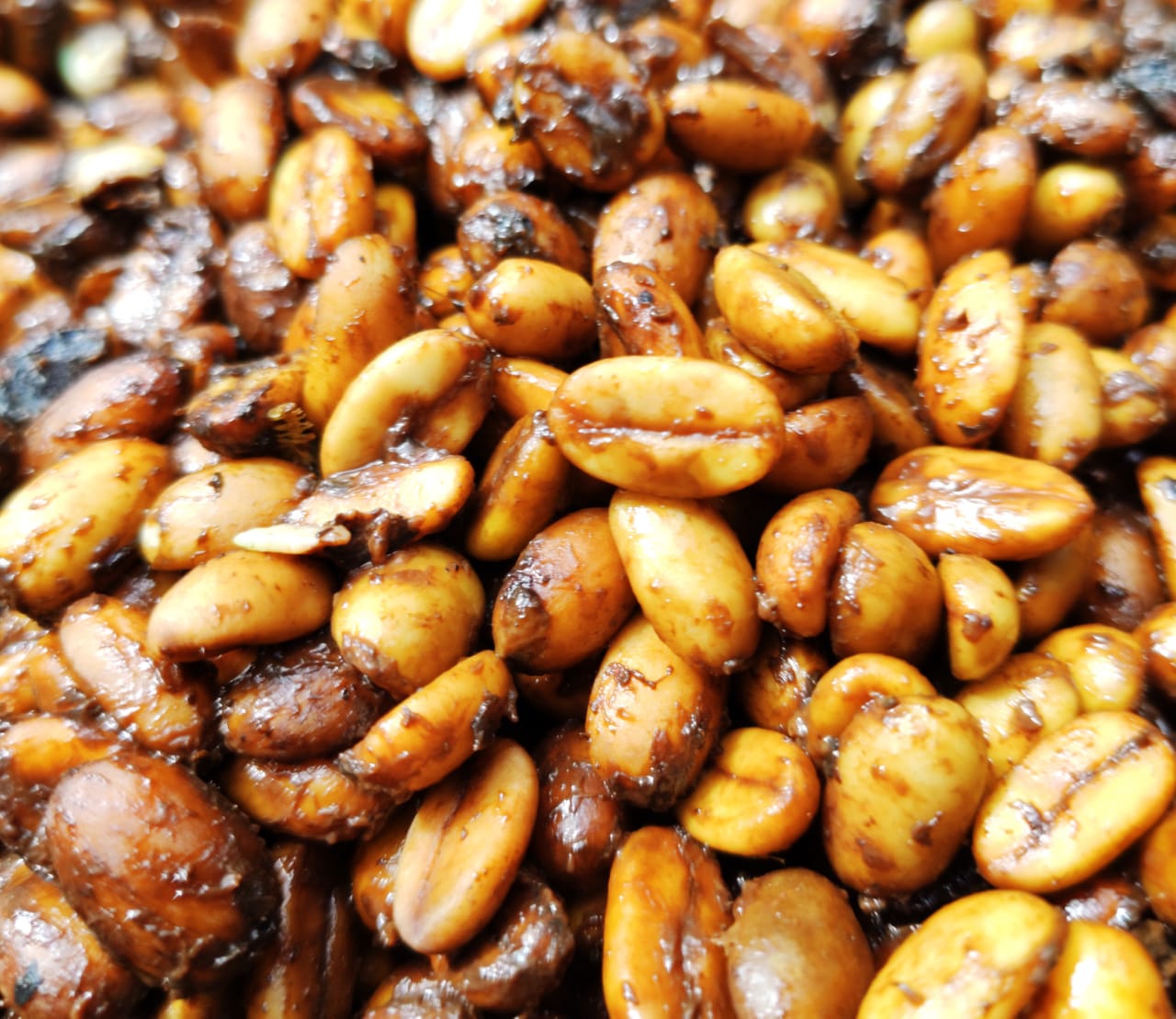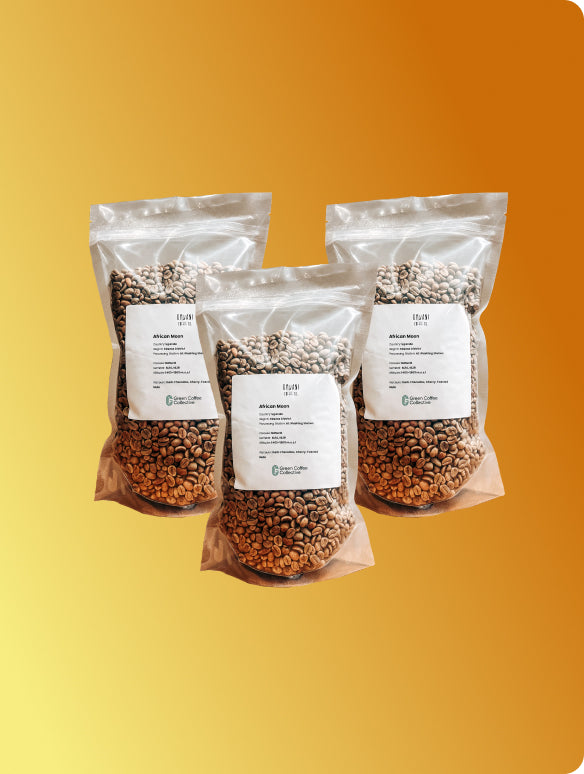
Green Coffee Beans for Fruity Filter Brewing
This collection brings together green coffees selected for their fruit-forward profiles and strong performance in filter brewing. Expect expressive naturals, vibrant washed lots, and innovative processes from Colombia, Ethiopia, Kenya, and beyond - all chosen for juiciness, acidity, and sweetness in the cup.
-
Bukonzo Dream
Cupping Score86.25Processing methodVarietalSL 14 , SL 28Main flavour notesStrawberry | Caramel | Milk Chocolate | Tropical FruitOut of Stock -
Hermanos Aguilera Yellow Honey Geisha
Cupping Score86.5Processing methodVarietalGeishaMain flavour notesJasmine | Lemongrass | FloralOut of Stock -
Henry Bonilla - Washed Geisha
Cupping Score86.25Processing methodVarietalGeishaMain flavour notesJasmin | Lime | ChocolateIn Stock+10kg left -
Pocitos Natural Geisha
Cupping Score88.0Processing methodVarietalGeishaMain flavour notesPapaya | Lemon | LotusIn Stock+10kg left -
North Rift Natural
Cupping Score87.75Processing methodVarietalBatian , Ruiru 11 , SL 28 , SL 34Main flavour notesRosehip | Blackberry | SweetIn Stock+40kg left -
Regional Huila
Cupping Score84.25Processing methodVarietalCastillo , CaturraMain flavour notesHazelnut | Caramel | Panela | Orange Peel | AppleIn Stock+20kg left -
Plan Libertad
Cupping Score87.0Processing methodVarietalMaragogypeMain flavour notesStone Fruits | Ripe Mango | CitrusIn Stock+10kg left -
El Socorro - Natural Pacamara
Cupping Score86.0Processing methodVarietalPacamaraMain flavour notesNectarine | Honey | MelonIn Stock+85kg left -
Las Flores Pink Bourbon Decaf
Cupping Score87.0Processing methodVarietalPink BourbonMain flavour notesClove | Pink Pepper | Ginger | RosesIn Stock+15kg left -
Elvis Choquehuanca Washed Caturra
Cupping Score85.5Processing methodVarietalCaturraMain flavour notesNectarines | Wild Berries | CaramelOut of Stock -
Ghattadahally
Cupping Score85.0Processing methodVarietalChandragiriMain flavour notesRed apple | White grape | Milk chocolateOut of Stock -
Nimbus Pink Bourbon Decaf
Cupping Score86.0Processing methodVarietalPink BourbonMain flavour notesPapaya | Blueberry Compote | SherryIn Stock+80kg left -
Kirunga Lot 14
Cupping Score87.5Processing methodVarietalRed BourbonMain flavour notesFruity | Clean | Juicy | CreamyOut of Stock -
Starmaya PB (Fully Washed)
Cupping Score83.75Processing methodVarietalStarmayaMain flavour notesDark Chocolate | Dark Berries | BramblesOut of Stock

Your guide to Green Coffee Beans for Fruity Filter Brewing
-
What makes a coffee great for fruity filter brewing?
-
Do I need a specific roast profile for filter brewing?
-
Which processing methods give fruity results in the cup?
-
Perfect Green Coffee Beans for Fruity Filter Brewing
-
Understanding Fruity Filter Brewing & Bean Suitability
-
What to Look for in Green Coffee Beans for Fruity Filter Brewing
-
Key Characteristics of Ideal Beans for Fruity Filter Brewing
-
Conclusion
